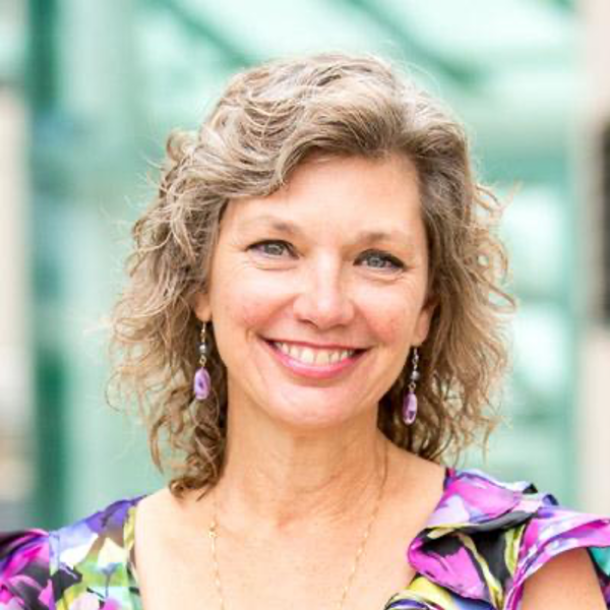TAMEST Member Profile of Kim Orth, Ph.D. (NAS), UT Southwestern Medical Center

One of TAMEST’s newest members, Kim Orth, Ph.D. (NAS), Investigator, Howard Hughes Medical Institute; W.W. Caruth Jr. Scholar in Biomedical Research, Earl A. Forsythe Chair in Biomedical Science, UT Southwestern Medical Center, was recently inducted into the National Academy of Sciences (NAS) for her discoveries advancing the understanding of the basic biochemical mechanisms underlying many bacterial infections.
Her lab has achieved this by identifying new ways that invading bacteria hijack and deregulate a cell’s signaling systems. Today, the Orth Lab studies how pathogens manipulate host cells for their own benefit, providing insights into bacteria that cause foodborne illnesses.
The road that Dr. Orth has taken to become a distinguished researcher in her field has been far from easy. From paying her own way through school and overcoming adversities to get where she is today—working at UT Southwestern with fellow TAMEST Member Eric Olson, Ph.D. (NAM, NAS)’s molecular biology department—Dr. Orth says the atmosphere for scientists with diverse backgrounds has improved, but that there is still work to be done.
Growing up in the South, Dr. Orth spent the first part of her career overcoming the stigma that scientific research wasn’t necessarily seen as a job for a wife and mother. The recipient of the 2011 Edith and Peter O’Donnell Award in Science found the field of molecular biology by accident when she signed up for it as an elective in college. She described the mixture of biology, chemistry and genetics as “awe inspiring” and she soon switched her major—and future—to biochemistry.
Upon graduation, Dr. Orth was given the opportunity to work as a technician in a lab using her newly gained skills. Despite a few self-described stumbles along the way, Dr. Orth obtained her master’s and doctorate in biochemistry and then worked postdoctoral positions in three labs over about seven years. She did this while raising two kids with her husband, who was also advancing his scientific career at the time. She remains an advocate for working mothers in science as well as a mentor for the next generation of scientists. She says that her scientific productivity did not suffer as a working mom, and in fact, it only made her efficiency at the bench increase.
Dr. Orth connected with TAMEST to tell us more.
Prior to becoming a TAMEST Member in 2020, you were the recipient of the 2011 Edith and Peter O’Donnell Award in Science. How did receiving the award help your career trajectory?
The TAMEST 2011 Edith and Peter O’Donnell Award immensely benefited my career by recognizing our contribution to science. The recognition and support from the O’Donnell Awards played a key role in my success over the years in receiving national awards including being elected to the National Academy of Sciences (NAS).
When receiving the O’Donnell Award, we were told that TAMEST had the foresight to see their awardees as future members of NAS. I am so honored, elated and grateful that they had such vision.
How has the current pandemic impeded your research and work?
We have tried to stay positive and productive by helping to host virtual journal clubs and lab meetings, international zoom meetings (VibriOnline 2020 and AMPylationPlus), finishing manuscripts and designing future studies.
We are slowly and safely heading back to the lab and feeling good that we have made progress despite the circumstances.
What advice do you have for young students and researchers looking to get into STEM?
My winding path toward a career in science was awkward, like an adolescent finding an identity. It did not follow a classic course; it had many interruptions, complications, and challenges.
It also involved a bit of luck and extremely supportive colleagues, mentors, and family, including my husband, children, and in-laws. I was inspired to tell my story in the Journal of Biological Chemistry because I met a young woman interviewing in 2018 for graduate school who is growing up with the same complicated family expectations, social challenges, love for science, and desire to be a scientist as I had four decades ago.
Her future is uncertain, because her chosen academic path is not encouraged by those around her. We, as a society, must find ways to encourage, promote, enable, and give strength to those who want to follow their dreams, despite facing many challenges in their lives. The article outlines some things I learned on my career path that I hope might be helpful for others.
What do you see as TAMEST’s role within the state of Texas?
TAMEST provides a strong community that supports young scientists and improves the vision of science for our state and national leaders. We must inform society how our world is changing and provide productive steps to follow so that the next generations can survive future challenges they will face.
Why do you work and live in Texas?
Well, Texas is my home (home is where your heart is) and UT Southwestern is a great place to work with top notch colleagues in science and medicine.
Is there anything else you’d like to add?
Just as I did for gender bias, I have taken time to reflect and educate myself on the injustices happening to the black community and the unfair treatment as a whole to people of color, including Dreamers. I encourage other scientists to do the same and to welcome diversity and actively support and mentor younger scientists regardless of gender or the color of their skin. To quote Elie Wiesel (a Nobel Laureate), “Neutrality helps the oppressor, never the victim. Silence encourages the tormentor, never the tormented.”
Finally, many thanks to all who have worked in my lab, to colleagues and friends that have supported me and to my wonderful family.

